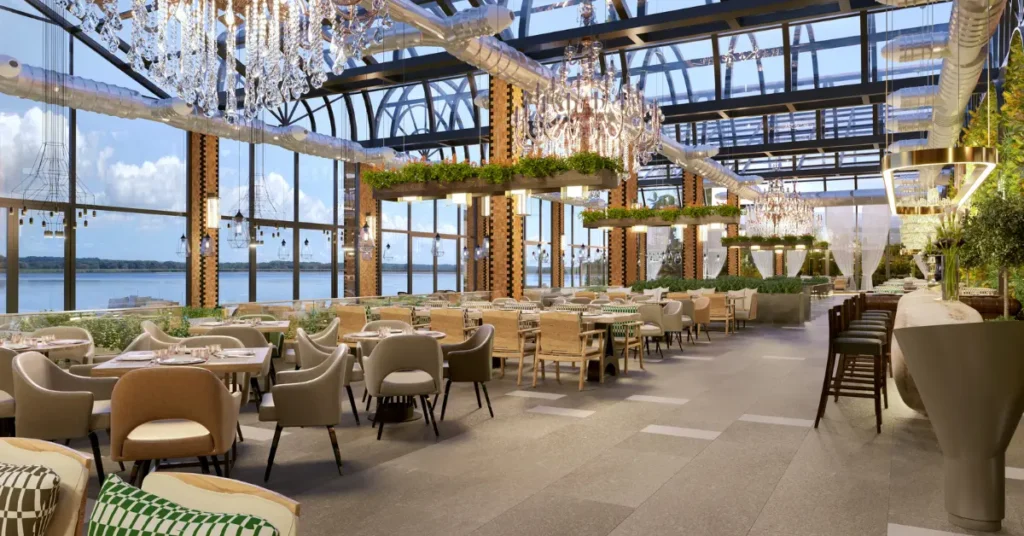Mastering the Art: Restaurant Interiors as an Interior Designer
Designing the interior of a restaurant is a multifaceted task that requires careful consideration of various factors. As an interior designer, you have the unique opportunity to create spaces that not only look visually appealing but also enhance the overall dining experience for patrons. From choosing the right color palette to optimizing layout and functionality, every aspect of restaurant interior design plays a crucial role in shaping the ambiance and atmosphere. In this comprehensive guide, we will delve into the intricacies of designing a restaurant interior that captivates and delights.
Understanding the Brand and Concept:

Before diving into the design process, it’s essential to gain a thorough understanding of the restaurant’s brand identity and concept. Whether it’s a chic bistro, a cozy café, or a fine dining establishment, the interior design should reflect the essence of the brand. Conduct meetings with the client to discuss their vision, target demographic, and desired ambiance. This initial step lays the foundation for the entire design journey and ensures that your creative direction aligns with the client’s expectations.
Creating a Functional Layout:
One of the primary considerations in restaurant interior design is creating a functional layout that optimizes space and facilitates smooth traffic flow. Start by analyzing the floor plan and identifying key areas such as the dining area, bar, kitchen, and restrooms. Determine the ideal seating capacity based on the client’s requirements and local regulations. Consider factors like table spacing, accessibility, and ergonomic furniture design to maximize comfort for diners. Collaborate with architects and contractors to address structural constraints and ensure that the layout meets safety standards.
Choosing the Right Color Palette:
The color scheme plays a pivotal role in setting the mood and ambiance of a restaurant. Selecting the right colors can evoke emotions, stimulate appetite, and reinforce the brand identity. Consider factors such as the cuisine type, target demographic, and desired atmosphere when choosing the color palette. Warm, earthy tones like terracotta and olive green create a cozy ambiance, while vibrant hues like red and orange energize the space. For a more sophisticated look, opt for neutral shades like taupe and charcoal combined with accents of rich jewel tones.
Creating Ambiance with Lighting:
Lighting is a crucial element in restaurant interior design as it sets the mood and enhances the overall dining experience. Incorporate a layered lighting scheme that combines ambient, task, and accent lighting to create depth and dimension. Pendant lights or chandeliers can add a touch of elegance to the dining area, while recessed lighting provides functional illumination. Consider installing dimmers to adjust the intensity of the lighting based on the time of day and desired ambiance. Additionally, leverage natural light wherever possible to create a bright and inviting atmosphere.
Incorporating Texture and Materials:
Texture plays a significant role in adding visual interest and tactile appeal to restaurant interiors. Experiment with a variety of materials such as wood, metal, glass, and fabric to create contrast and depth. For instance, exposed brick walls lend a rustic charm to a trattoria, while sleek marble countertops exude luxury in a fine dining establishment. Pay attention to the tactile quality of furnishings and finishes, ensuring that they are both visually appealing and comfortable to touch. Incorporate texture through upholstery, wall treatments, and decorative accents to create a sensory-rich environment.
Furniture and Decor Selection:
Carefully curated furniture and decor can elevate the aesthetic appeal of a restaurant interior while also reflecting its personality and style. Choose furniture that strikes a balance between form and function, considering factors such as durability, comfort, and aesthetics. Mix and match different styles to create visual interest and eclectic charm. Integrate statement pieces like oversized artwork, unique light fixtures, or eye-catching wall murals to create focal points within the space. Pay attention to details such as table settings, linens, and tabletop decor to enhance the overall dining experience.
Emphasizing Brand Identity:
Incorporate elements of the restaurant’s brand identity throughout the interior design to create a cohesive and memorable experience for patrons. This could include logo signage, branded merchandise displays, or thematic decor that reflects the restaurant’s concept and story. Use signage and graphics strategically to guide guests through the space and highlight key features such as the bar or specialty dining areas. Consider partnering with local artists or artisans to create custom artwork or installations that add a unique touch to the interior design.
Conclusion:
Designing a restaurant interior is a collaborative process that requires creativity, attention to detail, and a deep understanding of the brand and concept. As an interior designer, you have the opportunity to create spaces that not only look visually stunning but also enhance the overall dining experience for patrons. By carefully considering factors such as layout, color palette, lighting, texture, and decor, you can design restaurant interiors that captivate the senses and leave a lasting impression. With a thoughtful approach and a passion for design, you can truly master the art of restaurant interior design.












